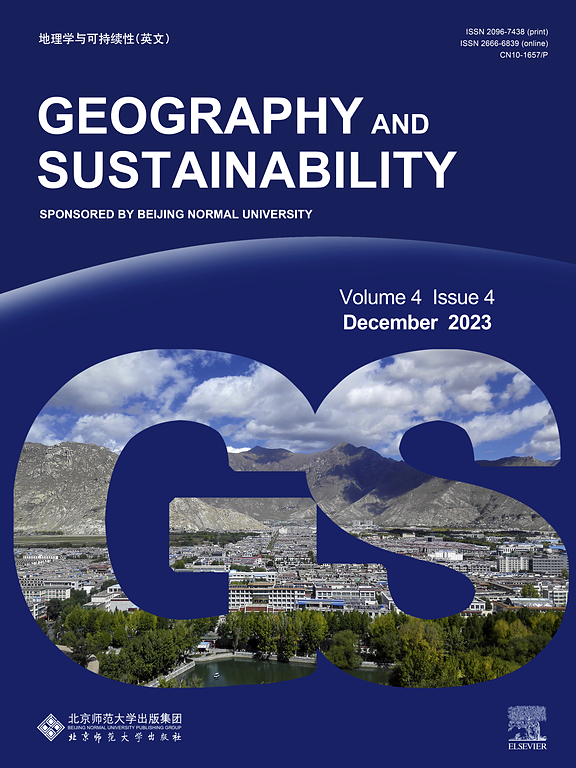Improving service accessibility and equity for sustainable development goals without newly facilities by rural settlement reconstruction
IF 8
1区 环境科学与生态学
Q1 GEOGRAPHY, PHYSICAL
引用次数: 0
Abstract
Ensuring the provision of accessible, affordable, and high-quality public services to all individuals aligns with one of the paramount aims of the United Nations’ Sustainable Development Goals (SDGs). In the face of escalating urbanization and a dwindling rural populace in China, reconstructing rural settlements to enhance public service accessibility has become a fundamental strategy for achieving the SDGs in rural areas. However, few studies have examined the optimal methods for rural settlement reconstruction that ensure accessible and equitable public services while considering multiple existing facilities and service provisions. This paper focuses on rural settlement reconstruction in the context of the SDGs, employing an inverted MCLP-CC (maximal coverage location problem for complementary coverage) model to identify optimal rural settlements and a rank-based method for their relocation. Conducted in Changyuan, a county-level city in Henan Province, China, this study observed significant enhancements in both accessibility and equity following rural settlement reconstruction by utilizing the MH3SFCA (modified Huff 3-step floating catchment area) and the spatial Lorenz curve method. Remarkably, these improvements were achieved without the addition of new facilities, with the accessibility increasing by 44.21 %, 4.97 %, and 3.11 %; Gini coefficients decreasing by 19.53 %, 1.64 %, and 3.18 %; Ricci-Schutz coefficients decreasing by 21.09 %, 2.09 %, and 4.33 % for educational, medical, and cultural and sports facilities, respectively. It indicated that rural settlement reconstruction can bolster the accessibility and equity of public services by leveraging existing facilities. This paper provides a new framework for stakeholders to better reconstruct rural settlements and promote sustainable development in rural areas in China.
通过农村居民点重建,在不新建设施的情况下,改善服务可及性和公平性,实现可持续发展目标
确保向所有人提供可获得、负担得起和高质量的公共服务,符合联合国可持续发展目标(sdg)的首要目标之一。面对中国不断升级的城市化进程和不断减少的农村人口,重建农村居民点以提升公共服务可及性已成为实现农村可持续发展目标的根本战略。然而,很少有研究审查了在考虑多种现有设施和服务提供的情况下确保获得公平公共服务的农村住区重建的最佳方法。本文以可持续发展目标背景下的乡村聚落重建为研究重点,采用倒置的MCLP-CC(最大覆盖定位问题)模型来确定最优乡村聚落,并采用基于秩的方法对其进行搬迁。以河南省长远市为研究样本,采用MH3SFCA (modified Huff 3-step floating catchment area)和空间Lorenz曲线方法对农村居民点进行改造后,可达性和公平性均有显著提高。值得注意的是,这些改善是在不增加新设施的情况下实现的,可达性分别提高了44.21%、4.97%和3.11%;基尼系数分别下降19.53%、1.64%和3.18%;教育设施、医疗设施和文化体育设施的里奇-舒茨系数分别下降了21.09%、2.09%和4.33%。报告指出,农村住区重建可以通过利用现有设施,加强公共服务的可及性和公平性。本文为利益相关者更好地重构农村聚落,促进中国农村可持续发展提供了一个新的框架。
本文章由计算机程序翻译,如有差异,请以英文原文为准。
求助全文
约1分钟内获得全文
求助全文
来源期刊

Geography and Sustainability
Social Sciences-Geography, Planning and Development
CiteScore
16.70
自引率
3.10%
发文量
32
审稿时长
41 days
期刊介绍:
Geography and Sustainability serves as a central hub for interdisciplinary research and education aimed at promoting sustainable development from an integrated geography perspective. By bridging natural and human sciences, the journal fosters broader analysis and innovative thinking on global and regional sustainability issues.
Geography and Sustainability welcomes original, high-quality research articles, review articles, short communications, technical comments, perspective articles and editorials on the following themes:
Geographical Processes: Interactions with and between water, soil, atmosphere and the biosphere and their spatio-temporal variations;
Human-Environmental Systems: Interactions between humans and the environment, resilience of socio-ecological systems and vulnerability;
Ecosystem Services and Human Wellbeing: Ecosystem structure, processes, services and their linkages with human wellbeing;
Sustainable Development: Theory, practice and critical challenges in sustainable development.
 求助内容:
求助内容: 应助结果提醒方式:
应助结果提醒方式:


